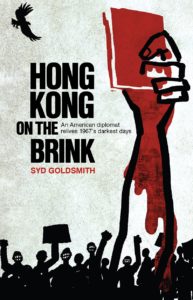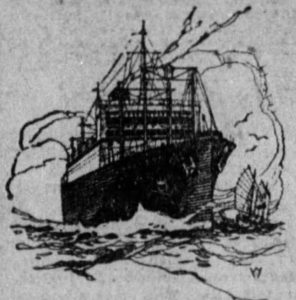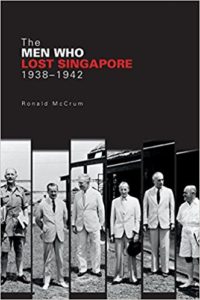All things old China - books, anecdotes, stories, podcasts, factoids & ramblings from the author Paul French
Posted: June 3rd, 2017 | No Comments »
Syd Goldsmith’s great memoir of the dark days of 1967 in Hong Kong and an encroaching Red China…

Syd Goldsmith’s first taste of China’s Cultural Revolution is blood on his tongue. It’s 1967. Hong Kong is simmering, plagued by communist-led riots and strikes, crippled transport, punishing water-rationing, takeover threats from Beijing and roadside bombs. And Syd — the only Caucasian Foreign Service Officer at the American Consulate General who speaks Cantonese — is made responsible for reporting and analysis of the Hong Kong government’s ability to survive.
The CIA station chief and the head of Macau’s gold syndicate play major roles in Syd’s story, along with Newsweek’s Sydney Liu and Maynard Parker, and a steady stream of inquiring foreign correspondents and China-watchers. Richard Nixon makes a cameo appearance — to talk football with Syd since the consul general won’t see him — in this riveting memoir of a year when Hong Kong’s “borrowed time†seemed about to expire.
Posted: June 2nd, 2017 | No Comments »
An illustration of an ocean liner towering over a Chinese junk – from a 1925 advert in the American press for the American Oriental Mail Line (which was effectively the Dollar Line after 1922) – their route was: Seattle, Victoria (BC), Yokohama, Kobe, Shanghai, Hong Kong and Manila. All their ships were named after American presidents – McKinley, Grant, Jefferson, Madison, Jackson etc….

Posted: June 1st, 2017 | No Comments »
1912 was a bumper year for China books…a new republic, the death of the Dowager Empress, just over a decade since the Boxers….the China Hands got scribbling and here are some of the new entrants in the (now very long lasting…) China books competition….

Posted: May 31st, 2017 | No Comments »
In 1928 many North American newspapers ran this very youthful picture of General Chiang Kai-shek, noting him as a man to watch in the coming years…

Posted: May 30th, 2017 | No Comments »
The Men Who Lost Singapore is Ronnie McCrum’s examination of the failure of the British military and colonial command in Singapore in 1942 and how their errors led to the fall…

The British military failure against the Japanese invasion of Singapore in 1942 is a well-documented and closely examined episode. But far less attention has been paid to the role of the colonial governor and his staff during this period, an oversight Ronald McCrum corrects with this insightful history. As McCrum shows, the failure of the civil authorities in conjunction with the military to fully prepare the country for the possibility of war was a key factor in the defeat. In The Men Who Lost Singapore, McCrum closely examines the role and responsibilities of the colonial authorities before and during the war. He argues that the poor and occasionally hostile relations that developed between the local government and the British military hierarchy prevented the development and implementation of a strategic and unified plan of defense against the growing threat of the Japanese. Consequently, this indecisive and ineffective leadership led to significant losses and civilian casualties that could have been prevented.
Posted: May 27th, 2017 | No Comments »
Well done Camphor Press for issuing George Kerr’s Formosa Betrayed…

Formosa Betrayed is a detailed, impassioned account of Chinese Nationalist (KMT) misrule that remains the most important English-language book ever written about Taiwan.
Author George H. Kerr lived in Taiwan in the late 1930s, when the island was a colony of Japan. During the war, he worked for the U.S. Navy as a Taiwan expert. From 1945 to 1947, Kerr served as vice consul of the U.S. diplomatic mission in Taipei, where he was an eyewitness to the February 28 Massacre and the subsequent mass arrests and executions.
As well as chronicling KMT repression during the early years of the White Terror, Kerr documents widespread corruption, showing how the island was systematically looted. The “betrayed†in the title refers not only to the crushing disappointment Taiwanese felt when they realized KMT rule was worse than that of the Japanese but also to the culpability of the American government. The United States was in large part responsible for handing Taiwan over to the Nationalists and helping them maintain their grip on power.
Pre-order the paperback (shipping 14 June) or get the e-book now.
Formosa Betrayed has served as a foundational text for generations of Taiwanese democracy and independence activists. It had an explosive effect among overseas Taiwanese students; for many, the book was their first encounter in print with their country’s dark, forbidden history. A 1974 Chinese-language translation increased its impact still more. It is a powerful classic that has withstood the test of time, a must-read book that will change the way you look at Taiwan.
Posted: May 25th, 2017 | No Comments »
Peng Ming-min’s A Taste of Freedom has been reisssued as a soft copy and e-book by Camphor Press…

A Taste of Freedom is the moving story of a reluctant hero and his journey from bookish youth to renowned scholar to political dissident.
Peng Ming-min was born into a doctor’s family in central Taiwan in 1923. He moved to Japan to study, at first French, then law and political science. He was badly injured in a U.S. air raid, losing an arm, and during his recuperation he witnessed the atomic bombing of Nagasaki.
Peng’s post-war return to Taiwan was bittersweet; the island’s new masters, the Chinese Nationalists (KMT) were “unbelievably corrupt and greedy. For eighteen months they looted our island…. They were carpetbaggers, occupying enemy territory, and we were being treated as a conquered people.†When nationwide protests erupted in 1947 in what is known as the 228 Massacre, Peng – despite his academic interest in politics – kept a safe distance and escaped punishment in the bloody crackdown and purges that followed. Peng pursued his studies in Canada and France, and quickly established himself as an authority in the new field of international air law. Returning to Taiwan, he became a full professor at the age of 34. The young academic star attracted the attention of President Chiang Kai-shek and other KMT leaders, who wanted to cultivate him as a model example of a local Taiwanese in the party elite.
Not only did Peng refuse to become window-dressing as a token Taiwanese, he decided to fight back against the regime. In 1964 Peng printed a manifesto calling for genuine democracy. After Peng was arrested and sentenced to eight years in prison for sedition, his international profile helped secure an early release. In 1970, while under house arrest and the heavy surveillance of the secret police, he made a daring escape to Sweden, where he was granted political asylum. Not long after this he wrote A Taste of Freedom, which was originally published in 1972 and later translated into Mandarin.
After twenty-two years in exile Peng Ming-min was finally able to return to Taiwan, where he was a candidate in Taiwan’s first direct presidential election, in 1996.
Arguably the most readable account of Taiwan’s turbulent mid-twentieth century, A Taste of Freedom is the perfect introduction for anyone who wants to understand modern Taiwan.
Posted: May 24th, 2017 | No Comments »
A Good Reputation Endures Forever: The Chinese Labour Corps on the Western Front
An exhibition exploring the role of the thousands of Chinese who risked their lives alongside the British armed forces during the First World War.
96,000 Chinese men volunteered to work for Britain in the First World War as part of the Chinese Labour Corps. They undertook essential and often dangerous work behind the lines on the western front and thousands lost their lives. Yet their contribution was barely acknowledged at the end of the war and in the years that have followed they have been largely written out of histories of the war. They have been described as the ‘forgotten of the forgotten’.
This exhibition examines the vital role of the Chinese Labour Corps using historic photographs and objects created by the men at the front.
Image: WJ Hawkings Collection, courtesy of John de Lucy
Contact: oriental.museum@durham.ac.uk







